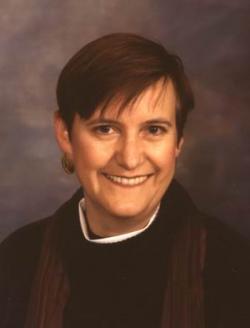Beyond gender categories
Let’s focus on our experiences of God

By: The Rev. Jennifer Phillips
“In Christ … there is not male and female.”
The concept is not new, and yet it has taken until the 21st century for the beginnings of a world consensus that women and girls merit equal status, education and dignity as men and boys: a watershed change in human outlook.
Another such change has just begun: the recognition that human beings are not tidily divided into male and female, but inhabit a spectrum of sexual and gender identities that result from a combination of genetic, physiological, environmental, social and spiritual factors.
As a medical center chaplain in the early ’80s, I listened to the stories of individuals whose sex and gender identities intersected with their experiences of illness or accident. Some were born with ambiguous genitalia (and some of these had physical gender assigned by surgery in childhood, others not.) Some had disease or trauma that greatly changed their genitals. Some had chromosomal differences that blurred the genetic boundary of male and female. Some experienced themselves as “transgendered” — an identity then only beginning to find a name and description — as having one physical gender and another inner gender.
Many were gay or lesbian. Some identified themselves as bisexual. Some cross-dressed, straight or gay. Some were pained greatly by their identities; others were at peace and astonishingly well-adjusted despite the ostracism and scorn they experienced. Many had established deep, intimate relationships despite their differences from what I had grown up thinking was the “norm.” To have the privilege of hearing about these lives and spiritual searchings close-up filled me with awe and reverence for the complexity and strength of human beings.
After eight years of hospital work with such marvelous human beings, I could never again experience the world as split into two categories, male and female. Nor could I write off these different lives as simply “damaged” or “anomalous.” They represent a hefty minority of humankind, across all cultures.
By all the standards of human health, many of the people toward the center of the sex-and-gender spectrum work and love well, build up their communities, seek God and give of themselves. They bear up under suffering and know happiness, nurture children and care for aging parents. They are as whole as anyone I know.
It feels presumptuous of me to write about “them” as a group to which I am on the outside — I, a double-cross-dressing priest who every Sunday morning puts on the garb of a male clerical profession that sports clothing the world sees as female: lace and skirts. No, my gender identity leans toward the middle, too, by vocation!
Since the first photograph of the earth from space, we who have seen it can never not know that we are citizens of one world that is finite and fragile, no matter how big it feels under our own feet.
That was a watershed moment of awakening. I believe that we are on the threshold of another such moment in seeing our human gender and sexual identity, not as bipolar, but as manifold.
As the image of the world in space brought home to us Christians the reality of being co-creators with God, bearing a deep responsibility for our small planet, so the images of a various humanity may begin to bring home to us our responsibility to live without bigotry, contempt or arrogance with our neighbors in all their difference. At the moment, these images are uncomfortable — the “eunuch” in Scripture, the drag queen on the theatre stage, the vested woman priest, the trans with surgically and chemically reshaped body, the kiss of the same-sex couple, the person sitting on the subway train opposite whose gender we cannot decipher.
A first response to difference is to think it is wrong, that there is some mistake. Christians have spoken of these neighbors as “accidents,” “unnatural,” even as errors in Creation that God did not intend. Yet at the same time we believe that God has known us as we were being knit together in the womb and that there is nowhere we may flee from God’s presence and love. What would our community look like if we were to suspend our opinions and fears about each other and simply ask:
“What does it feel like to be you in the world? How do you experience God as loving you? How is God’s grace known to you in your body? In your relationships? What does your particular call to holiness look like? Who are you?”
And then listen.
